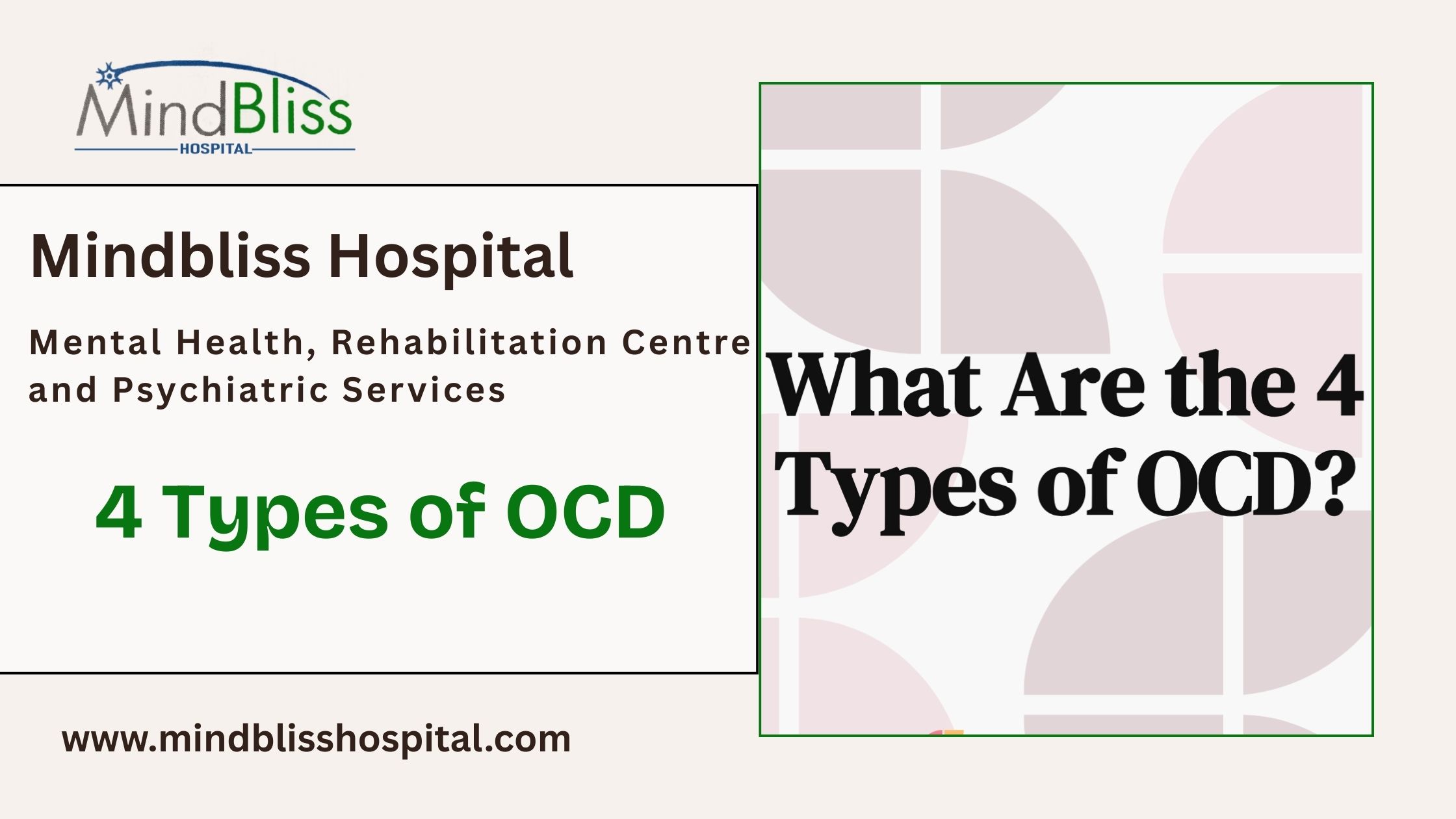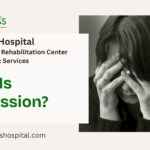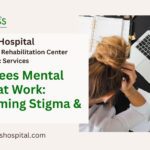
Types of OCD: A Complete Guide by Mindbliss Hospital
Types of OCD: Complete Guide
Obsessive-Compulsive Disorder (OCD) is a common yet often misunderstood mental health condition. Many people use the term casually to describe neatness or perfectionism, but real OCD goes far beyond simple habits. It involves intrusive thoughts that create anxiety and repetitive behaviors that are difficult to control.
Millions of people across the world live with OCD, and it can affect anyone regardless of age, gender, or background. For those struggling, daily life becomes exhausting as obsessions and compulsions take up hours of their time. Unfortunately, stigma and misinformation prevent many from seeking help.
At Mindbliss Hospital, we believe awareness is the first step toward treatment. By understanding the different types of OCD, families and individuals can recognize symptoms early and explore professional options. In this blog, we will cover the four main types of OCD—Checking OCD, Contamination OCD, Symmetry and Ordering OCD, and Ruminations and Intrusive Thoughts OCD.
What is OCD?
OCD is a mental health disorder that combines obsessions and compulsions. Obsessions are unwanted thoughts, fears, or images that repeatedly enter the mind. Compulsions are the repetitive actions or rituals performed to ease the distress these obsessions create.
For example, someone may constantly fear leaving the stove on, and to calm that anxiety, they check it again and again before leaving home. While this might bring short-term relief, the fear quickly returns, creating an endless cycle.
Symptoms can vary. Some people check doors or appliances repeatedly, while others fear contamination and clean excessively. A few arrange items until they feel “just right,” and some experience intrusive thoughts that disturb them deeply. Whatever the form, these symptoms disrupt normal life and create emotional stress.
The causes of OCD are complex. Research suggests a mix of biological, genetic, and environmental factors. Brain chemistry imbalances, family history, and personality traits like perfectionism all play a role. Stressful or traumatic life events can also trigger or worsen symptoms.
If left untreated, OCD can interfere with work, studies, and personal relationships. Many patients report mental exhaustion, frustration, and even depression. Recognizing the specific type of OCD is key to finding the right treatment plan and improving quality of life.
1. Checking OCD
Checking OCD is one of the most common forms of the disorder. People with this type constantly doubt themselves and feel they must check things repeatedly to prevent harm. The fear of making a mistake or causing danger is so strong that logic alone cannot stop the urge.
Common examples include locking and unlocking doors many times to feel safe, re-reading documents endlessly to avoid errors, or returning to check appliances even when they are off. Some even drive back to ensure they haven’t hit someone, despite having no evidence.
The triggers are usually linked to fear of harm or responsibility. A person may worry about leaving the gas on, forgetting to lock a door, or making a small mistake that could lead to disaster. These fears create intense anxiety, which drives compulsive checking.
Checking OCD can seriously affect daily life. At work, endless checking lowers productivity and creates stress. At home, relationships may suffer because of constant reassurance-seeking. Emotionally, the person feels trapped in a cycle of fear, doubt, and exhaustion.
At Mindbliss Hospital, treatment begins with therapies such as Cognitive Behavioral Therapy (CBT). This helps patients challenge irrational beliefs and replace them with healthier thoughts. Exposure and Response Prevention (ERP) is also effective, as it gradually exposes patients to their fears and helps them resist the urge to check.
For severe cases, medications like selective serotonin reuptake inhibitors (SSRIs) can ease symptoms. Family counseling is another valuable tool, as it helps loved ones support recovery without reinforcing compulsive behavior.
One example is a teacher who came to Mindbliss Hospital with severe checking rituals. She spent hours re-checking lesson plans, fearing that even a small mistake would cost her job. With six months of CBT and ERP, she reduced her compulsions dramatically and regained confidence in her work. Her story shows that with the right treatment, recovery is possible.
2. Contamination OCD
Contamination OCD is another common form of the disorder, and it is often misunderstood as simply being a “germ freak.” In reality, it goes far beyond normal hygiene concerns. People with this type of OCD live with an overwhelming fear of germs, illness, or dirt. They believe that contact with unclean objects or environments will cause serious harm to themselves or their loved ones.
The symptoms usually revolve around excessive cleaning or avoidance. A person may wash their hands repeatedly until their skin becomes sore or cracked. They might avoid touching doorknobs, money, or public transport handles out of fear of contamination. Some people even avoid hugging or shaking hands because of the anxiety it triggers. For others, the fear is not only about germs but also about toxic substances or even moral “impurity.”
Triggers for contamination OCD are often related to fear of disease or spreading harm. For example, someone might believe that touching a dirty surface could infect their entire family, even when the risk is minimal. The anxiety becomes so strong that rituals like cleaning, handwashing, or changing clothes are repeated for hours.
The impact of this OCD type is significant. People may isolate themselves socially to avoid potential contamination, which can lead to loneliness and depression. Work and family life are also affected, as simple tasks such as cooking, grocery shopping, or traveling feel overwhelming. During times of public health crises, such as the COVID-19 pandemic, contamination OCD can become even more severe.
At Mindbliss Hospital, treatment for contamination OCD focuses on breaking the cycle of fear and compulsion. Exposure and Response Prevention (ERP) therapy gradually helps patients face their triggers, such as touching a surface without immediately washing their hands. Cognitive Behavioral Therapy (CBT) helps challenge irrational beliefs about germs and safety. In more serious cases, medications like SSRIs are prescribed to reduce the intensity of obsessions and compulsions. Counseling also helps family members understand how to support recovery without enabling avoidance behaviors.
A real-life case we treated involved a young man who washed his hands nearly 100 times a day. He avoided eating with others and even wore gloves at home. Through structured ERP therapy, he gradually reduced his handwashing to a normal level and learned to manage his fears. Today, he participates in social activities that once felt impossible.
3. Symmetry and Ordering OCD
Symmetry and Ordering OCD is driven by an intense need for balance, order, and precision. People with this type of OCD feel uncomfortable when things are not arranged in a particular way. They may spend hours aligning objects, rearranging furniture, or organizing items until they feel “just right.” The obsession is not about tidiness alone but about achieving a sense of balance that temporarily relieves anxiety.
Symptoms often include arranging books, clothes, or household items in perfect symmetry. A person may adjust a picture frame countless times or feel compelled to line up pens or utensils in exact order. Even numbers, patterns, and sequences can trigger anxiety—some individuals insist on doing tasks an even number of times to feel calm.
The triggers usually stem from a deep sense of discomfort or fear that something bad will happen if balance is not achieved. For example, a person may believe that if objects are not perfectly aligned, harm might come to them or someone they love. Although they recognize that this belief may not make logical sense, the anxiety is so powerful that they cannot resist the compulsion.
The impact on daily life can be draining. Simple activities such as getting dressed, cleaning a room, or completing office tasks may take hours because of repeated arranging and re-arranging. Relationships can also suffer, as family members may not understand why these rituals feel so necessary. Over time, the stress of constant organizing can lead to fatigue, frustration, and low self-esteem.
Treatment at Mindbliss Hospital for symmetry OCD focuses on helping patients tolerate discomfort without giving in to compulsions. ERP therapy gradually exposes them to situations where objects are left imperfect or slightly disorganized. With guidance, patients learn to resist the urge to “fix” things and discover that nothing harmful happens as a result. CBT helps in addressing the deeper belief systems that fuel the obsession with order. Medications are also available to reduce the intensity of intrusive thoughts.
One case involved a college student who could not begin studying until his desk was perfectly arranged. He spent more time organizing his materials than actually learning. With consistent therapy at Mindbliss Hospital, he was able to reduce his rituals and focus on his academic goals. Today, he manages his symptoms well and no longer feels controlled by the need for perfection.
4. Ruminations and Intrusive Thoughts OCD
Ruminations and Intrusive Thoughts OCD is often one of the most distressing forms of the disorder. Unlike other types that involve visible compulsions such as checking or cleaning, this type is more mental and hidden. People with this form experience disturbing thoughts or images that feel intrusive and uncontrollable. These thoughts may go against their values, beliefs, or personality, which makes them even more distressing.
The intrusive thoughts can take many forms. Some people worry about accidentally harming others, even when they would never act on such thoughts. Others may experience violent or sexual images that shock and disturb them. Religious individuals may struggle with blasphemous thoughts that feel sinful. These are not desires or intentions—they are unwanted obsessions that the person desperately wants to stop.
To cope with the anxiety, individuals often engage in mental compulsions such as silently repeating prayers, mentally reviewing past actions, or seeking constant reassurance. However, these rituals do not solve the problem; they only reinforce the cycle. Because the symptoms are mostly internal, this type of OCD often goes unnoticed by others and can lead to shame, guilt, and isolation.
The impact on life is profound. A person may withdraw from relationships, fearing they could hurt others. They might avoid social gatherings or certain places that trigger thoughts. Over time, the constant battle inside their mind leads to exhaustion, depression, and a loss of confidence.
At Mindbliss Hospital, we reassure patients that intrusive thoughts do not define who they are. Specialized therapy, particularly CBT and ERP, is highly effective. Patients are guided to face their intrusive thoughts without performing mental rituals, which gradually reduces their power. Supportive therapy helps reduce guilt and self-blame, while medication may also be prescribed to stabilize intrusive patterns. By learning to tolerate and eventually dismiss these thoughts, individuals regain peace of mind and control over their lives.
Treatment Options at Mindbliss Hospital
At Mindbliss Hospital, we understand that each type of OCD has unique challenges, and treatment must be personalized. Our approach combines proven therapies, medical support, and emotional care to ensure recovery is both effective and sustainable.
The cornerstone of treatment is Cognitive Behavioral Therapy (CBT), which helps patients recognize and challenge irrational beliefs that drive obsessions and compulsions. A specialized branch of CBT, known as Exposure and Response Prevention (ERP), is one of the most effective methods for OCD. Patients are gradually exposed to situations that trigger their fears while being guided to resist the urge to perform compulsions. Over time, this reduces anxiety and breaks the cycle of OCD.
In more severe cases, medications such as selective serotonin reuptake inhibitors (SSRIs) are prescribed. These help regulate brain chemistry, making it easier for patients to engage with therapy. For individuals with treatment-resistant OCD, advanced options like neuromodulation may also be explored.
We also place strong emphasis on family counseling. Since OCD often affects loved ones, educating families on how to support recovery without reinforcing compulsions is a key part of the process. Group therapy and support networks further ensure that patients feel understood and less alone in their journey.
Our goal at Mindbliss Hospital is not only to reduce symptoms but also to empower individuals to live fulfilling, independent lives free from the control of OCD.
Conclusion: Types of OCD
Obsessive Compulsive Disorder is a complex condition that takes many different forms. Whether it appears as Checking OCD, Contamination OCD, Symmetry and Ordering OCD, or Ruminations and Intrusive Thoughts OCD, the effects on daily life can be overwhelming. However, it is important to remember that OCD is treatable, and with the right approach, recovery is possible.
At Mindbliss Hospital, we believe that no one should suffer in silence. Through a combination of evidence-based therapies, medical care, and compassionate support, we help individuals break free from the cycle of obsessions and compulsions. If you or someone you love is struggling with OCD, reaching out for professional help is the first step toward healing and reclaiming life.










